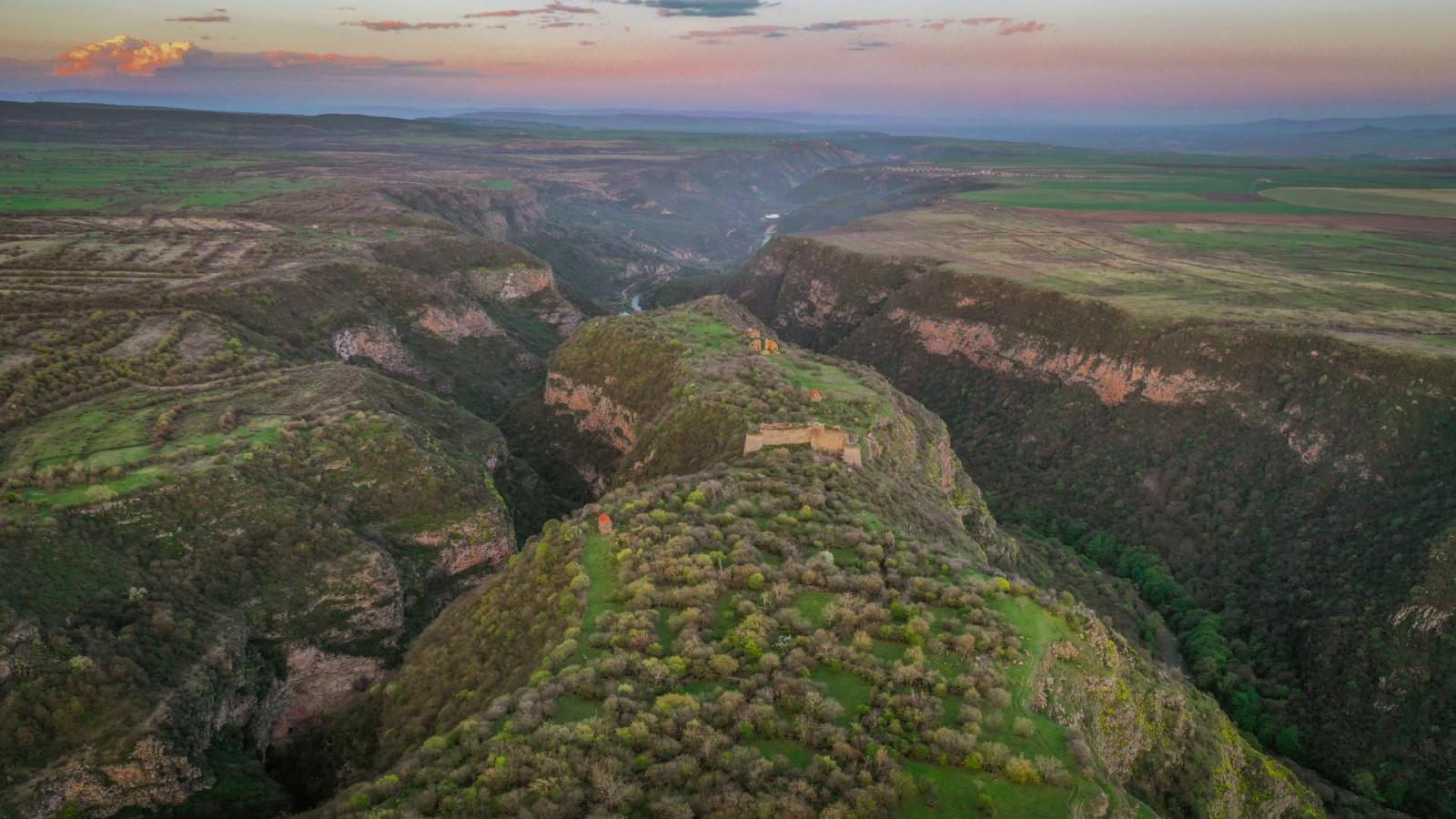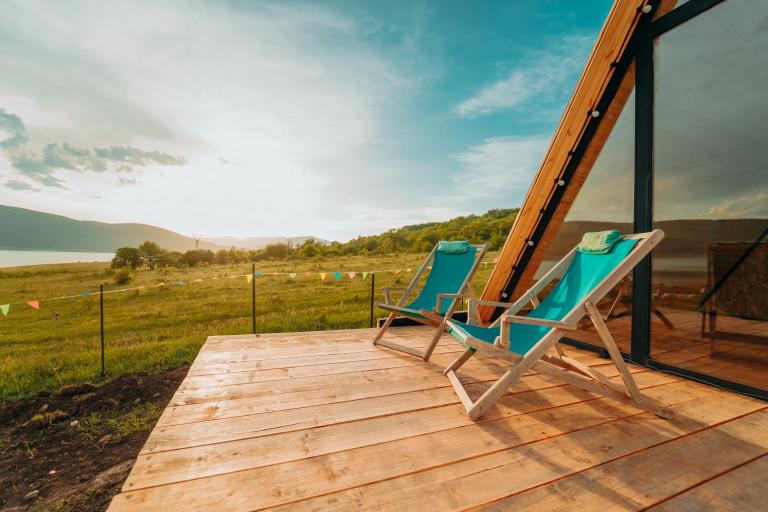
Top 10 Places in Kvemo Kartli
Kvemo Kartli is located in the south-eastern part of Georgia and is part of historical Kartli. This region is home to important historical, cultural, and natural landmarks, which attracts tourists every season. In this article, we want to show you the top 10 places you can visit in Kvemo Kartli.
1. Dmanisi Sioni and Archaeological Site
Dmanisi is one of the most famous and ancient settlements in Kvemo Kartli. In 2001 the body parts of ancient humans called Zezva and Mzia were discovered here. Scientists believe that they lived in this area 1.8-1.6 million years ago and that is why they are called "the first Europeans".
Dmanisi Museum-Reserve is located in Dmanisi, which combines several buildings. From the fragments of bones found on the archeological layers here, the world learned about Zezva and Mzia. A Dmanisi Sioni is dating back to the VI century and has a unique gate decorated with ornaments and inscriptions.
The town of Dmanisi is located on the cape of Dmanisi and consists of several parts, including the medieval town, which consists of an inner fortress, and secular and religious buildings.
2. Tandzia
The village of Tandzia is located in Bolnisi Municipality. The place is best known for the fact that Sulkhan-Saba Orbeliani, a well-known Georgian writer and political figure, was born here. There is a House Museum of Literature named after him in Tandzia, which was founded in 1984 and holds about 300 exhibits. The festival of "Sabaoba" is held here every year in honor of Sulkhan-Saba. The village also preserves two churches and the ruins of a palace built by Papuna Orbeliani in 1670.
3. Dashbashi Canyon
Dashbashi Canyon is located in Tsalka Municipality and is one of the most stunning sights in the region. It is a canyon-like valley with biodiversity, where the river Khrami flows. The canyon is characterized by a splendid environment and a short walking distance, which makes it popular among visitors. It is distinguished by the complexity of the terrain and the variety of spectacular waterfalls. As we have mentioned, there are pedestrian paths on the ground, the length of which is 1.8 km and it takes an average of one hour to cover it.
4. Kldekari Fortress
Kldekari Fortress is located in Tetritskaro Municipality, on the rocky peak of Trialeti Range. Kldekari had great historical significance as it was located on important trade routes. Its name derives from the exit cut into the rock on the Trialeti ridge (literally, klde- rock, kari- door). Kldekari Fortress was the stronghold of the Baghuashi family (Liparitids). That's why its history is closely connected with this family history. The castle is very damaged at present and it is impossible to restore it to its original form. Visitors are always fascinated by the breathtaking views from the castle to the Algeti Valley.
5. Bolnisi Sioni
Bolnisi Sioni is a 5th-century basilica located in the city of Bolnisi. This architectural monument has great importance for the history of Georgia because it has preserved ancient Georgian inscriptions. Also on the facade of the temple, we find various images of the Christian symbol - the cross, one of which is known as the "Bolnisi Cross". We also find the first relief sculptural images in this temple. Bolnisi Sioni is included in the category of cultural monuments of national importance. When visiting Kvemo Kartli, you should not miss the chance to visit it.
6. Algeti National Park
Algeti National Park is located in Tetritskaro municipality, in the valley of the river Algeti and includes the eastern part of the Trialeti ridge. It is one hour away from Tbilisi and is the best place to spend time with friends. It includes the Dashbashi Canyon and Kldekari Fortress mentioned above, as well as the natural monuments of Birtvisi and Samshvilde Canyons.
There are several ecotourism trails in the park, which include both hiking and horseback riding routes. There are five such directions, of which only one trail is marked - "Royal Ridge".
7. Tsughrughasheni Church
Tsughrughasheni is located in Bolnisi municipality. It is a Georgian domed church of the XIII century and it is also included in the category of immovable cultural monuments of national importance. The temple is unique as there is no other temple in Georgia with the same name. It is suggested that the name has a Mongolian origin. The church distinguishes by the abundance of colored stones used in construction and decorated with numerous ornaments. There are three inscriptions on the walls of the temple, which mention King George and the builder of the church the son of Hasan Arsen.
8. Didgori Monument
The memorial complex is located in Didgori Valley and is dedicated to the great battle that took place on August 12, 1121, between the Georgians and the Turk-Seljuks, which ended with a brilliant victory for the Georgians. Historians have called this battle a "miraculous victory". The memorial occupies a large area. In the center of the complex, on a mountain, stands a monument depicting a leopard, surrounded by large swords, ceremonial columns, bells, and other elements. Every year in August, the feast of Didgoroba is held here, which is dedicated to the celebration of victory in battle.
9. The Martqopi Monastery of the Deity
Martkopi Monastery is located in Gardabani Municipality, on the forest-covered Yalno ridge. Its foundation is attributed to one of the 13 Assyrian fathers in the 6th century - Anton Martkopeli. It is a national monument of special importance. In addition to the architectural features, the monastery has beautiful views. Together with them, the temple building creates a wonderful synthesis.
The monastery was repeatedly destroyed by foreign invasions, including the Mongols, Tamerlane (a Turco-Mongol conqueror), and the Leks. Since the 1930s, the Communists closed the monastery here and turned it first into a shelter for homeless children and then into a holiday home for the factory employees. Monastic life in Martkopi has been restored since 1989.
10. Betania
Betania Monastery is located in the Didgori district near Tbilisi. It was built in the XII-XIII centuries and is included in the category of cultural monuments of national importance. The temple is famous for the fact that one of the three frescoes of Queen Tamar is preserved here. The monastery consists of two churches. Historically, it was the ancestral tomb of Georgian feudal lords - the Orbelians (Orbeli). The rediscovery of the temple is linked to the name of Grigol Orbeliani, who discovered it while hunting.






Please login to add a comment
Write a comment